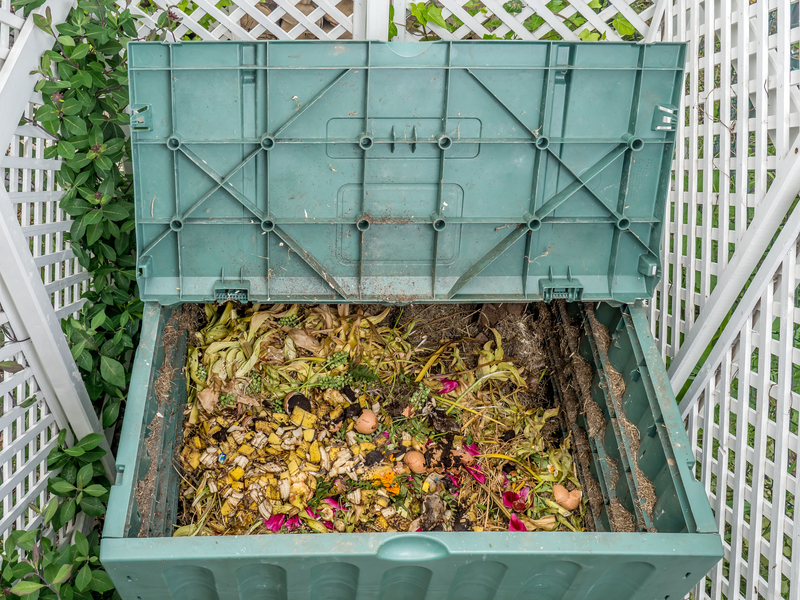Eco-Friendly Approaches to Disposing of PPE Waste Responsibly
In the wake of global health crises, such as the COVID-19 pandemic, an unprecedented surge in the use of personal protective equipment (PPE) has led to mounting environmental concerns. The improper disposal of PPE--ranging from masks and gloves to face shields and gowns--poses a significant threat to ecosystems and public health. This comprehensive guide explores eco-friendly approaches to disposing of PPE waste responsibly, offering practical advice, innovative solutions, and insights into creating a sustainable future.
Understanding the Environmental Impact of PPE Waste
Single-use PPE, mainly made from plastics like polypropylene, became an everyday necessity. Unfortunately, their improper disposal has caused:
- PPE litter on streets, oceans, and forests
- Microplastic pollution affecting marine life
- Landfill overloads that slow decomposition for centuries
- Potential human and animal health risks due to contamination

What Is PPE Waste?
PPE waste includes but is not limited to:
- Disposable surgical masks and respirators
- Latex, nitrile, and vinyl gloves
- Face shields and goggles
- Protective gowns and aprons
Challenges in Managing PPE Waste
- Non-biodegradable materials: Most PPE products are made from plastics, which do not break down easily in nature.
- Biohazard risks: PPE used in medical or contaminated environments must be handled with care to prevent the spread of infections.
- Lack of infrastructure: Many regions lack proper medical and hazardous waste facilities.
- Public awareness: Many individuals are unfamiliar with responsible PPE disposal methods.
Eco-Friendly Approaches to Disposing of PPE Waste
1. Reducing PPE Use Where Possible
The most sustainable approach is to minimize unnecessary PPE use:
- Opt for reusable masks and face shields when safe and appropriate
- Choose multi-use PPE rather than single-use disposable items
- Encourage eco-friendly practices in workplaces and public settings
2. Segregation and Collection at Source
Proper sorting and collection at the source is essential for responsible PPE disposal.
- Separate PPE waste from general household and recyclable waste
- Use color-coded bins with clear labels for PPE disposal in public and healthcare settings
- Seal used PPE in designated bags to avoid contamination
3. Dedicated PPE Waste Disposal Systems
Governments and organizations must establish robust systems for collecting and treating PPE waste:
- PPE drop-off points in public areas, workplaces, and healthcare facilities
- Regular collection by trained personnel to prevent environmental exposure
- Partnerships with certified hazardous waste handlers
4. Safe Disinfection and Reuse
Some PPE items can be safely disinfected and reused, reducing overall waste. Techniques include:
- UV-C irradiation: Effectively sterilizes masks and shields when performed according to guidelines
- Autoclaving: Used in medical settings to disinfect certain types of PPE
- Washing and drying: Applies to cloth masks that can be safely cleaned and reused
5. PPE Recycling Initiatives
Innovative companies and organizations are developing PPE recycling programs to divert waste from landfills:
- Mechanical recycling: Items like face shields and some masks are shredded and processed into raw materials for other products.
- Chemical recycling: Advanced techniques break down plastic PPE into base chemical feedstocks, which can be repurposed.
- Recycling bins for PPE: Placement in high-use locations such as hospitals and airports encourages responsible disposal.
6. Incorporating Biodegradable PPE
Biodegradable and sustainable PPE alternatives are emerging:
- Masks and gloves made from natural fibers (such as bamboo or hemp) that break down harmlessly in the environment.
- Research and development into water-soluble and compostable PPE.
7. Community Awareness and Education
Public education is crucial to boost responsible behavior:
- Awareness campaigns highlighting the impact of improper PPE disposal.
- Instructional signage wherever PPE is used or required, with clear PPE disposal guidelines.
- Workshops and school programs to teach environmental stewardship.
Innovative Solutions and Technologies
- Automated waste-sorting systems: Use of robotics and AI to distinguish and sort PPE waste for recycling or safe disposal.
- Energy recovery: Converting PPE waste into energy through incineration in controlled environments--ensures pollutants are filtered.
- Molecular recycling technologies: Advanced processes that depolymerize plastics in PPE, creating valuable raw materials.
- Mobile PPE incinerators: Portable units provide on-site sterilization and disposal in remote or resource-limited settings.
Best Practices for Individuals: How to Dispose of PPE Responsibly
Every individual plays a role in the responsible disposal of PPE:
- Do not litter: Never discard used PPE in public places. Always look for appropriate PPE disposal bins.
- Seal and dispose: Fold used masks, put them in a bag, and tie it before throwing away. This helps prevent contamination.
- Follow local guidelines: Some municipalities have special instructions for medical or PPE waste--follow them diligently.
- Consider alternatives: Use washable, reusable masks when possible and safe to do so.
- Participate in recycling programs: If available, use PPE recycling drop-off points in your area.
Recommendations for Businesses and Healthcare Facilities
- Audit and minimize PPE use--adopt reusable PPE wherever hygiene standards allow.
- Set up visible, accessible PPE disposal bins in high-traffic areas.
- Implement training sessions for all employees and contractors on responsible PPE waste handling and disposal.
- Partner with certified waste management agencies specializing in medical or hazardous waste.
- Explore PPE recycling services or manufacturers for take-back programs.
The Policy Perspective: Government Roles and Regulations
- Enforce stringent PPE waste regulations and monitor compliance in public and private sectors.
- Fund research into biodegradable PPE and advanced recycling technologies.
- Critically support public education and awareness efforts around PPE disposal.
- Encourage industry collaboration for sustainable PPE production and end-of-life management.

The Future of Sustainable PPE Disposal
The environmental impact of PPE waste is a profound, ongoing challenge that requires coordinated, innovative solutions. With increased awareness, technological innovation, and policy support, the world can transition to eco-friendly PPE disposal methods that protect both public health and the planet. Our collective shift toward sustainable PPE waste management is not just a necessity, but a responsibility we all share.
Key Takeaways
- Minimize PPE use when possible and switch to reusable and biodegradable options
- Segregate and safely collect used PPE to prevent contamination
- Support and participate in established PPE recycling programs
- Raise awareness and educate communities about responsible PPE disposal
- Advocate for policy and infrastructure that enables sustainable PPE waste solutions
Conclusion: Towards a Cleaner and Safer Environment
Taking eco-friendly approaches to disposing of PPE waste responsibly is essential to address the dual challenges of public health and environmental sustainability. By reducing reliance on single-use PPE, segregating and sanitizing waste, embracing recycling innovations, and fostering community and corporate responsibility, we can significantly lessen the environmental impact of PPE waste.
Ultimately, responsible PPE waste management protects not only our health but also the precious ecosystems upon which we all depend. By working together--individuals, businesses, and governments alike--we can create a resilient, eco-conscious society for generations to come.
Are you ready to make a difference? Start today by adopting these eco-friendly PPE waste disposal practices and encourage those around you to do the same.
